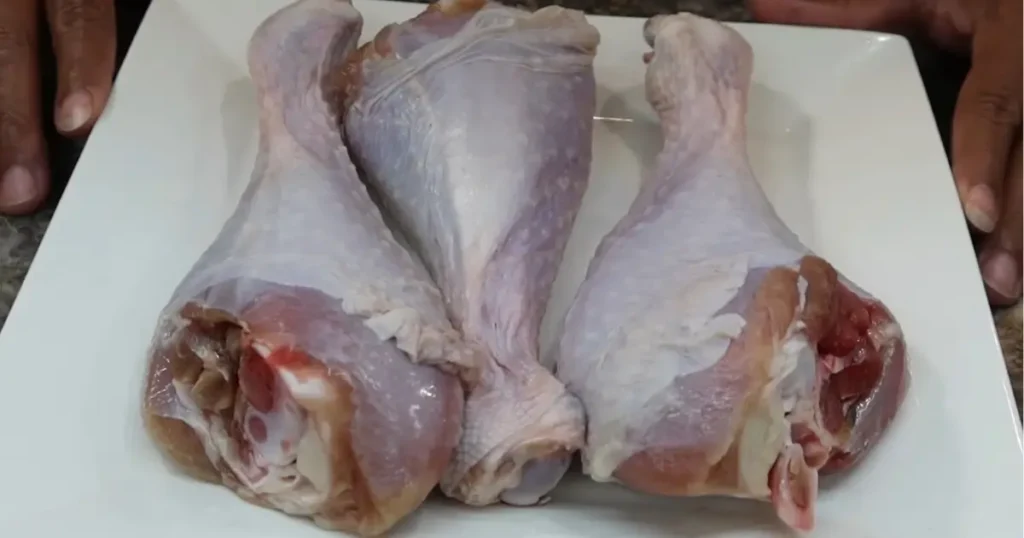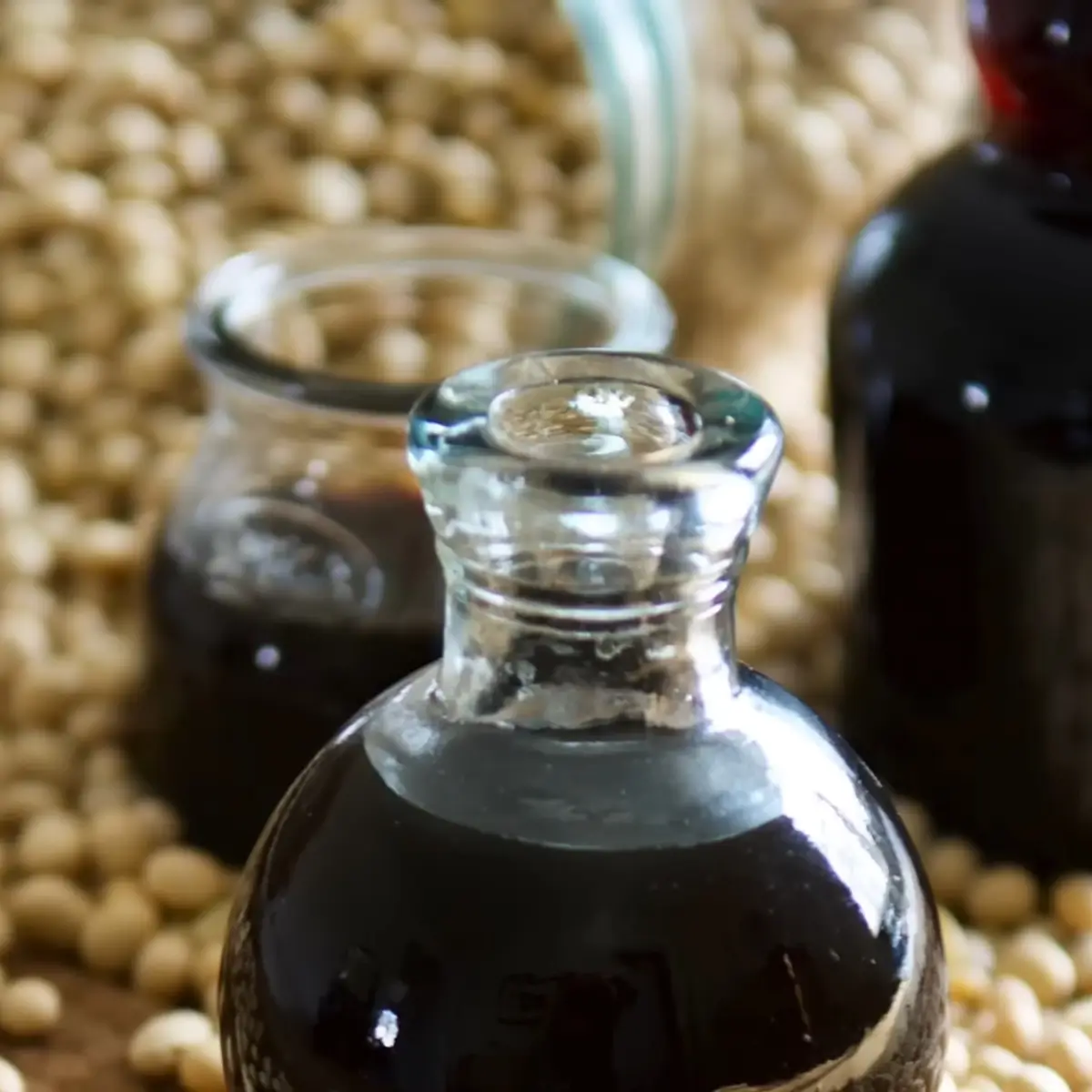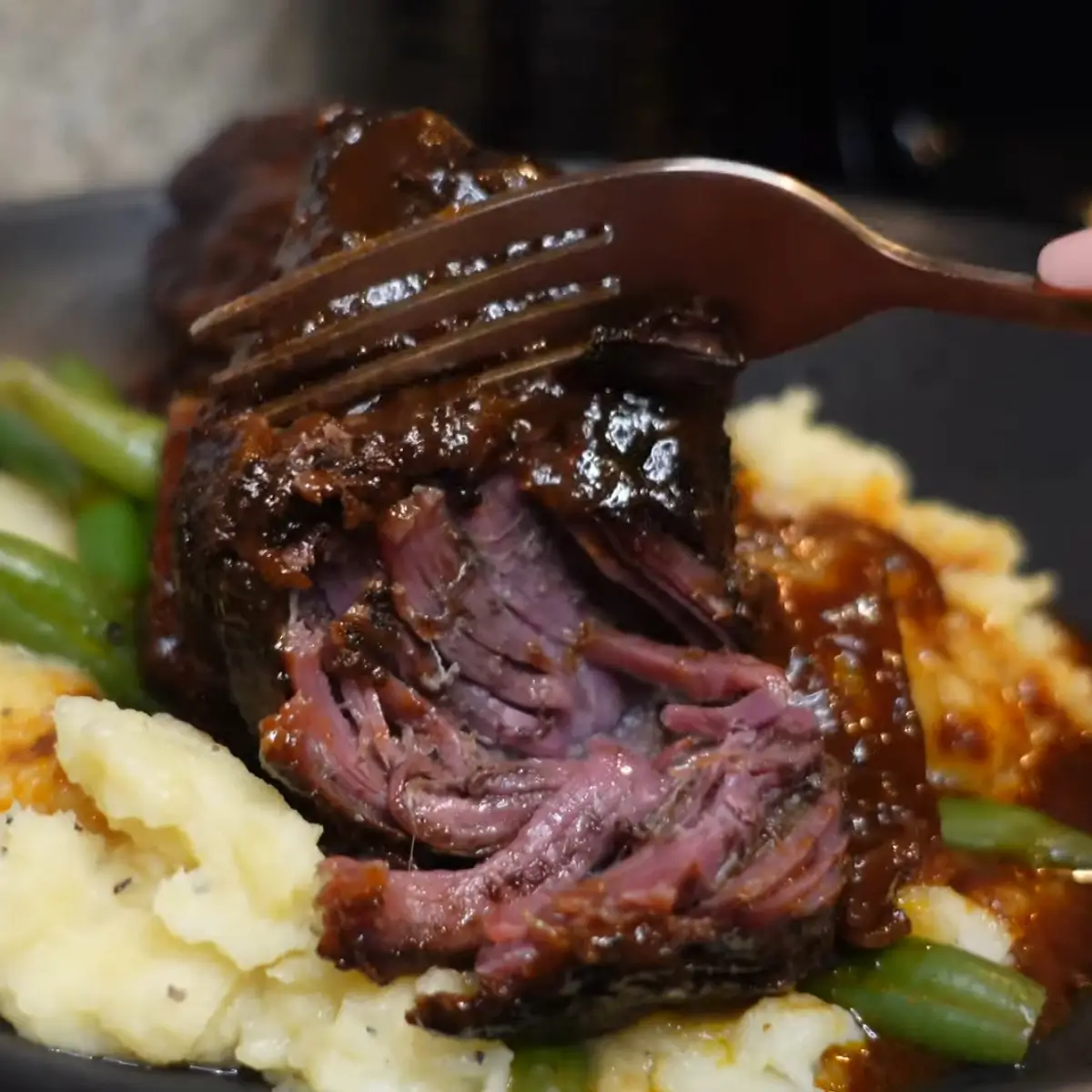It was a quiet November afternoon when my neighbor, Doña Carmen, invited me over to her backyard for what she called “a little taste of home.” I was curious but unsuspecting of the transformation my culinary life was about to undergo.
That day, she prepared the most unforgettable smoked turkey legs I had ever tasted. The smell of smoldering mesquite and spiced meat filled the air, drawing in neighbors like moths to flame.

That was the moment I knew I had to learn how to make this dish myself. Since then, I have experimented, refined, and developed a foolproof smoked turkey legs recipe that I am proud to share.
Disclaimer: This article is for informational purposes only and does not constitute medical advice, diagnosis, or treatment. Please consult a qualified health professional before making any dietary or cooking decisions.
Table of Contents
Why Smoked Turkey Legs Are a Must-Try
What Makes Smoked Turkey Legs Unique
There is something undeniably special about smoked meats, and BBQ turkey legs hold a top-tier status among them. Their distinctively rich, juicy texture paired with that deeply aromatic smoke flavor evokes a primal satisfaction.
Unlike chicken or beef, turkey legs have a denser muscle structure that holds up beautifully to the prolonged exposure to low heat and smoke. The leg meat stays moist due to its higher fat content compared to the breast, making it less prone to drying out during cooking.
Smoked turkey legs also capture the essence of American fair food. They bring memories of county fairs, Renaissance festivals, and amusement parks.
However, when made at home, they transcend nostalgia and become a gourmet dish. By using wood chips for smoking meat, you can experiment with various flavor profiles, making it both a comfort food and a culinary canvas.
Smoked Turkey Legs vs. Whole Smoked Turkey
While a whole smoked turkey can be impressive for holiday meals, it presents challenges: uneven cooking, longer preparation time, and difficulty in achieving consistent flavor.
By contrast, smoked drumsticks cook faster and more uniformly. You also get to focus on the flavorful dark meat, which absorbs marinades and smoke more effectively than the breast.
In my experience, smoked legs are ideal for smaller gatherings or when you want to provide a rustic, handheld main dish. They are easier to portion, easier to brine, and easier to perfect. Plus, no one complains about not getting their favorite piece of the bird.
Choosing the Best Turkey Legs for Smoking
Fresh vs Frozen Turkey Legs
When selecting turkey legs, start with quality. Both fresh and frozen options work well, but there are key considerations for each. Fresh turkey legs often offer better flavor and texture, particularly if sourced from a local farm or butcher.
However, frozen turkey legs are more widely available and usually more affordable. If choosing frozen, be sure to allow sufficient time to thaw them completely in the refrigerator—a process that can take up to 24 hours depending on size.
What Size Turkey Legs Work Best?
The size of the turkey leg can significantly influence the smoking process. Medium-sized legs, approximately 1 to 1.5 pounds each, are ideal. They cook evenly and absorb seasoning and smoke efficiently.
Larger legs may take longer to cook and could dry out before the interior reaches the desired temperature. For best results, select uniformly sized legs so that all pieces reach doneness simultaneously. This ensures even cooking, especially if you are cooking multiple pieces at once.
Choosing the right turkey leg sets the stage for the entire process. Always aim for legs with smooth, intact skin and a deep pink color, as these indicators signal freshness and quality. Remember, good meat is the foundation of a great smoked turkey legs recipe.
How to Prepare Turkey Legs for Smoking
The Importance of Brining Smoked Turkey Legs
Brining is not optional—it is essential. Whether you choose a wet or dry method, brining enhances moisture retention, deepens flavor, and tenderizes the meat. I prefer a simple wet brine that combines kosher salt, brown sugar, garlic powder, onion powder, and dried thyme in filtered water.
Allow the turkey legs to soak for at least 8 hours, ideally overnight. The salt penetrates the meat, breaking down muscle fibers and enabling the legs to retain juices during smoking.

For those looking to save time, a dry brine using a spice rub can also be effective, though slightly less impactful in terms of moisture retention.
Brining also opens the door to subtle flavor infusions. You can experiment by adding orange zest, peppercorns, bay leaves, or apple cider vinegar to your brine. This not only improves taste but also adds aromatic complexity.
Creating a Flavorful Seasoning Rub
After brining, a seasoning rub gives your turkey legs that crave-worthy outer crust. My go-to blend includes smoked paprika, black pepper, cinnamon, garlic powder, brown sugar, and chili powder. Apply it generously after patting the legs dry. Use canola oil or olive oil to help the spices adhere.
Rub every crevice, making sure the seasoning is evenly distributed. This not only creates a flavorful bark during smoking but also contributes to a well-balanced bite. For a more adventurous flavor profile, consider including cayenne pepper or cumin. Remember, the rub is your chance to personalize your turkey legs.
Once seasoned, let the legs rest at room temperature for about 30 minutes. This helps the meat absorb the rub and come to a more consistent temperature before hitting the smoker.
How to Smoke Turkey Legs Step-by-Step
Essential Equipment for Smoking Turkey Legs
When preparing smoked turkey legs, having the proper equipment makes all the difference in achieving consistent, mouthwatering results. The foundational tool is, of course, the smoker. I personally prefer a wood pellet smoker because it offers precision temperature control and a steady burn. That said, a charcoal smoker or even a gas grill with a smoking box can work effectively as long as you maintain low and slow heat.
The second critical item is a reliable smoked meat thermometer. Accurate internal temperature readings are non-negotiable when it comes to poultry. Ensure your thermometer reads the thickest part of the leg without touching the bone. In addition, you will need:
- A drip pan to catch rendered fat and prevent flare-ups
- Tongs for turning the turkey legs without piercing the skin
- Heat-resistant gloves for safe handling
- Aluminum foil to wrap the meat for resting or reheating
For flavor, you will also need wood chips for smoking meat—applewood and hickory are my top choices.
Step-by-Step Instructions for Smoking Turkey Legs


Here is my tested and trusted method for achieving tender turkey legs every time:
- Preheat the smoker to 250°F. Add your choice of wood chips or pellets.
- Pat the turkey legs dry and brush with a thin layer of oil.
- Apply the seasoning rub generously, ensuring full coverage.
- Place legs on the smoker grates, leaving space between each leg for even air circulation.
- Smoke for 2.5 to 3 hours, depending on size, turning halfway through to promote even color and cook.
- Check internal temperature using a meat thermometer. You are aiming for 175°F in the thickest part.
- In the last 30 minutes, glaze the legs with your choice of hot honey or BBQ sauce.
- Once done, rest the legs for 10 minutes under tented foil before serving.
Smoking requires patience, but the result is well worth the effort.
How Long Does It Take to Smoke Turkey Legs?
The most frequent question I receive is, “How long does it take to smoke turkey legs?” The answer depends on a few variables: leg size, smoker temperature, and ambient conditions. On average, medium-sized legs take 2.5 to 3 hours at 250°F. Always verify doneness with a thermometer, not by time alone.
In colder weather, add 15 to 20 extra minutes. In humid conditions, the smoking process may accelerate slightly. Regardless, your guide should always be the internal temperature: 175°F. Undercooked poultry poses health risks, while overcooked legs can become tough and dry.
Using these guidelines ensures consistently juicy, flavorful pellet grill turkey legs every single time.
Best Wood for Smoking Turkey Legs
Popular Wood Choices and Flavor Profiles
Selecting the appropriate wood is one of the most vital steps in developing a distinct flavor for your smoked turkey legs recipe. Each type of wood imparts a unique aroma and taste to the meat. For turkey, mild fruitwoods are generally preferred, as they enhance the natural flavors without overpowering them.
- Applewood: Delivers a sweet, mild smoke that complements poultry beautifully.
- Cherrywood: Adds a hint of fruitiness and gives the meat a rich, mahogany color.
- Hickory: Stronger in profile, perfect if you want a bold, smoky flavor.
- Pecan: A nutty, slightly sweet wood that provides a balanced smoke.
Mixing Woods for a Signature Smoke Flavor
Do not hesitate to experiment by combining two or more wood types to create a custom blend. A mix of applewood and hickory, for instance, offers a sweet-smoky balance that elevates the turkey legs beyond the standard flavor profile.
The goal is to enhance the savory qualities of the turkey without masking them. Always use seasoned wood chips or pellets; green or wet wood can produce excessive smoke and undesirable bitterness. Consistency in smoke production ensures your turkey legs develop that iconic, crave-worthy bark while remaining tender on the inside.
The right wood not only flavors the meat but also fills your backyard with an irresistible aroma that brings everyone to the table.
Flavor Boosters: Glazes, Sauces, and Finishes
Hot Honey, BBQ, and Herb Glazes
Once the smoked turkey legs are close to done, it is time to elevate them with a glaze that introduces a rich and compelling final flavor layer. One of my favorites is a hot honey glaze, a combination of local honey, red chili flakes, and a splash of cayenne-based hot sauce. I warm this mixture gently in a small saucepan just before use.
Alternatively, a classic BBQ glaze made from ketchup, brown sugar, vinegar, and smoked paprika adds a bold, familiar taste. If you prefer a more aromatic finish, consider an herb glaze using melted butter, chopped sage, rosemary, and a squeeze of lemon.
Brush the glaze on during the last 30 minutes of smoking, reapplying every 10 minutes. This technique builds a lacquered, sticky coating that adheres beautifully to the turkey skin and forms a glossy crust.
Toppings and Garnishes for Presentation
When it comes to presentation, the little details can elevate your dish from rustic to restaurant-worthy. Just before serving, I like to sprinkle smoked drumsticks with toasted sesame seeds for a subtle crunch and nutty note. Fresh chopped chives or parsley add a burst of color and freshness.
These garnishes are more than decorative; they contribute layers of texture and flavor. For holiday spreads or casual BBQs alike, an artfully arranged platter of glazed, garnished turkey legs never fails to impress. A dash of coarse salt or a drizzle of extra hot honey at the table can complete the sensory experience.
Storing and Reheating Smoked Turkey Legs
How to Store Leftover Smoked Turkey Legs
Once the feast is over and your guests have gone home satisfied, you may find yourself with a few leftover smoked turkey legs. Storing them properly ensures they retain their flavor and moisture for future meals. First, allow the legs to cool completely to room temperature—this helps prevent condensation, which can lead to soggy skin or spoilage.
Wrap each leg tightly in aluminum foil or food-grade parchment paper. Then place them in an airtight container or resealable freezer bag. If you plan to consume them within three to four days, store them in the refrigerator. For longer storage, the freezer is your best option. I prefer vacuum sealing, as it minimizes air exposure and helps maintain quality for up to three months.
Label your containers with the date so you can keep track of freshness. Proper storage not only preserves taste and texture but also ensures food safety.
Best Reheating Methods Without Drying Out
Reheating brined smoked turkey legs without drying them out requires a gentle approach. My go-to method is wrapping the leg in foil and placing it in a preheated oven at 300°F for about 20–25 minutes. You can add a splash of broth or water inside the foil to create steam, helping rehydrate the meat.
Alternatively, you can warm the legs on a grill over indirect heat, again wrapped in foil. Avoid microwaving, as it often leads to uneven heating and rubbery texture. Regardless of the method, always check that the internal temperature reaches at least 165°F before serving.
By following these steps, your leftover turkey legs can be just as enjoyable the second time around.
Serving Ideas and Side Dishes
What to Serve with Smoked Turkey Legs
A perfectly cooked smoked turkey leg deserves equally satisfying accompaniments. I often pair mine with classic comfort foods that balance the smoky, savory flavor of the meat. Consider these:
- Creamy mac and cheese
- Southern-style collard greens
- Tangy coleslaw
- Roasted or candied sweet potatoes
- Homemade cornbread
- Garlic mashed potatoes
These sides complement the rich depth of the turkey legs, creating a well-rounded meal that appeals to all palates.
Creative Meal Ideas Using Leftover Turkey
Leftover turkey legs are far from boring. After removing the meat from the bone, I use it in a variety of inventive ways:
- Shredded in tacos with avocado and lime crema
- Stirred into a hearty turkey and wild rice soup
- Layered in a BBQ turkey sandwich with pickles and slaw
- Tossed into a creamy pasta with peas and mushrooms
These ideas turn yesterday’s meal into today’s culinary triumph, ensuring no delicious bite goes to waste.
Troubleshooting Smoked Turkey Legs
Why Are My Smoked Turkey Legs Tough?
One common issue home cooks face is ending up with tough smoked turkey legs. This often results from either cooking at too high a temperature or not allowing the meat to rest properly after cooking. Smoking at a low, consistent heat—ideally around 250°F—is key to rendering the connective tissue and achieving that fall-off-the-bone texture.
Additionally, skipping the brine or cutting the brine time short can contribute to dryness and toughness. Proper hydration and salt balance are essential for tenderizing the meat from the inside out.
Common Mistakes When Smoking Turkey Legs
Several avoidable missteps can undermine even the best smoked turkey legs recipe:
- Using green or wet wood, which creates acrid smoke
- Skipping the rub or applying it unevenly
- Over-smoking, which leads to bitterness
- Not monitoring internal temperature precisely
Correcting these issues helps ensure a flavorful, moist result every time. Take your time, follow the steps, and trust the process.
Smoked Turkey Legs Nutrition Facts (Per Serving – Estimated)
| Nutrient | Value |
|---|---|
| Calories | 281 kcal |
| Protein | 27 g |
| Carbohydrates | 27 g |
| Fat | 9 g |
| Saturated Fat | 3 g |
| Sodium | 75 mg |
| Sugar | 2 g |
| Iron | 17 mg |
| Calcium | 657 mg |
Frequently Asked Questions About Smoking Turkey Legs (FAQ)
How long does it take to smoke turkey legs?
Typically, it takes about 2.5 to 3 hours to smoke medium-sized smoked turkey legs at 250°F. The actual time may vary based on leg size, smoker type, and ambient conditions. Always use a thermometer to confirm the internal temperature has reached 175°F for optimal safety and tenderness.
Are smoked turkey legs already cooked?
Commercially sold smoked turkey legs are often pre-cooked, but always read packaging labels carefully. If you are smoking them at home, they are raw and require full cooking. Never assume doneness based on color or aroma alone.
Are smoked turkey legs good to eat?
Absolutely. When prepared properly, smoked turkey legs are flavorful, juicy, and deeply satisfying. The smoking process enhances their natural savoriness while retaining a tender, fall-off-the-bone texture.
Why are my smoked turkey legs tough?
Toughness usually results from improper temperature control or inadequate brining. Ensure your smoker maintains consistent low heat, and allow enough time for the legs to rest and reabsorb juices post-cooking. Tender results come from patience and precision.

Smoked Turkey Legs Recipe
Equipment
- Smoker You can use a pellet, charcoal, or offset smoker depending on your setup.
- Meat thermometer Essential for ensuring the turkey legs reach the safe internal temperature of 175°F.
- Cast iron skillet Ideal for warming and mixing the hot honey glaze.
- Grill tongs Use these to flip the turkey legs without piercing the meat.
- Aluminum foil Needed for wrapping the legs during resting or reheating to retain moisture.
Ingredients
For the Turkey Legs
- 4 bone-in turkey legs
- ⅔ cup BBQ seasoning rub a blend with brown sugar, paprika, garlic, and spices is ideal
- Canola oil as needed for coating
- Sesame seeds for garnish
- Chopped chives for garnish
For the Brine
- 6 cups warm filtered water
- ¼ cup dark brown sugar
- 3 tablespoons kosher salt
- 2 tablespoons freshly ground black pepper
- 2 tablespoons garlic powder
- 1½ tablespoons onion powder
- 1½ tablespoons dried thyme
For the Hot Honey Glaze
- 2 cups honey local preferred
- 1½ tablespoons hot sauce cayenne-based recommended
- 1 tablespoon red chili flakes
Instructions
Brine the Turkey Legs
- Combine warm water, kosher salt, brown sugar, pepper, garlic powder, onion powder, and thyme in a large bowl or container.
- Stir until all solids are dissolved.
- Submerge turkey legs in the brine, cover, and refrigerate for at least 4 hours, ideally overnight.
Prepare the Turkey Legs
- Remove turkey legs from the brine and pat them dry thoroughly.
- Brush lightly with oil, then rub generously with your BBQ seasoning.
- Let the seasoned legs rest at room temperature for 30 minutes.
Smoke the Turkey Legs
- Preheat smoker to 250°F. Add wood chips (applewood, hickory, or a blend).
- Place the turkey legs directly on the grates with space between each.
- Smoke for 2.5 to 3 hours, flipping halfway through.
- Check for an internal temperature of 175°F in the thickest part.
Apply Hot Honey Glaze
- In a skillet, gently heat honey, hot sauce, and chili flakes until well combined.
- In the last 30 minutes of smoking, brush glaze over the legs 2–3 times.
Rest and Serve
- Remove turkey legs and rest under foil for 5 minutes.
- Garnish with sesame seeds and chopped chives.
- Serve hot with sides of your choice.










